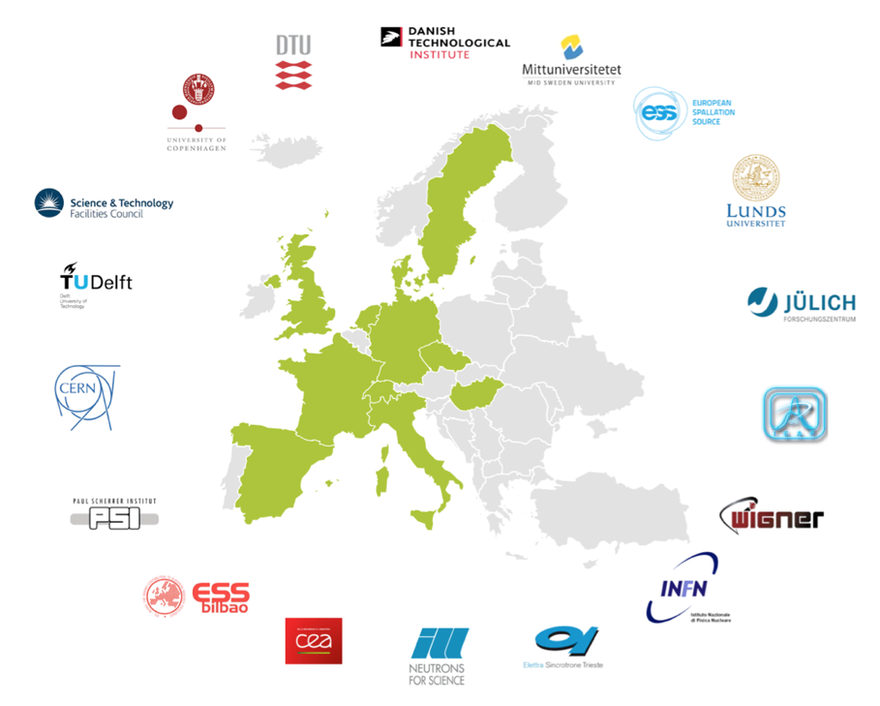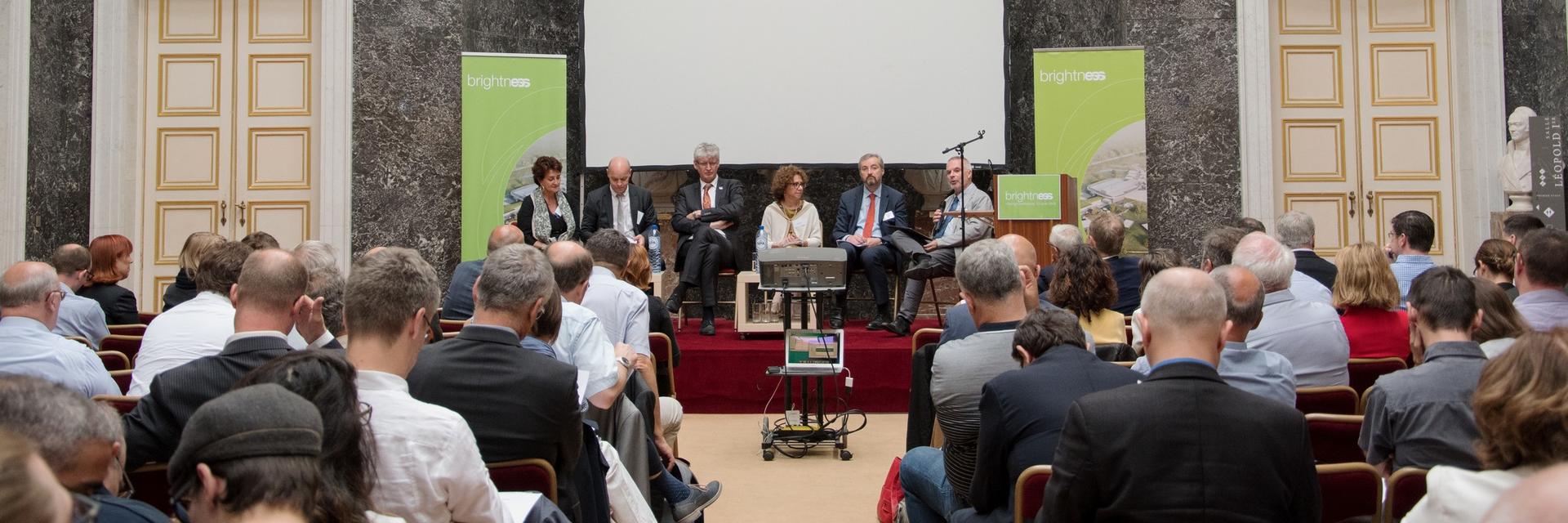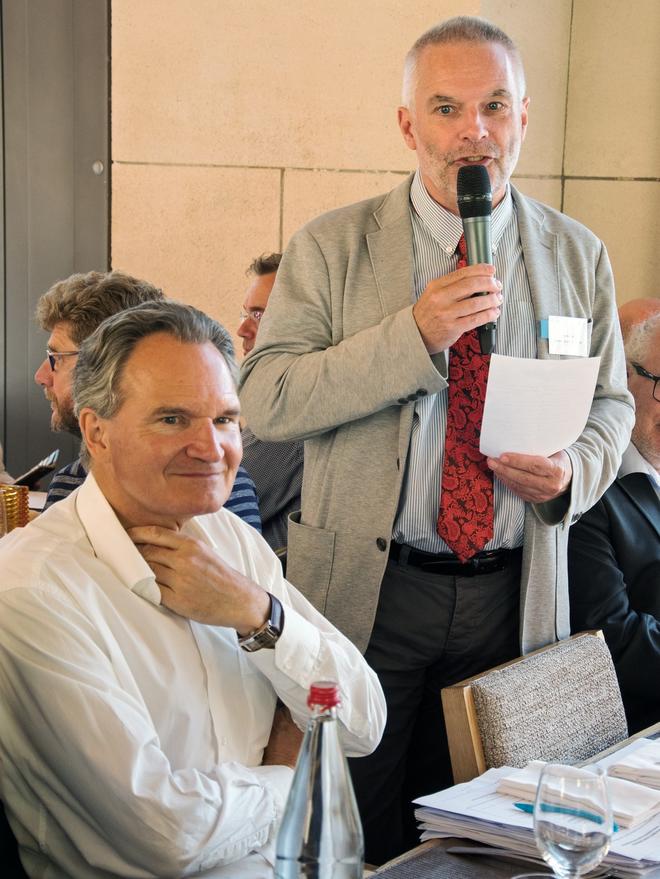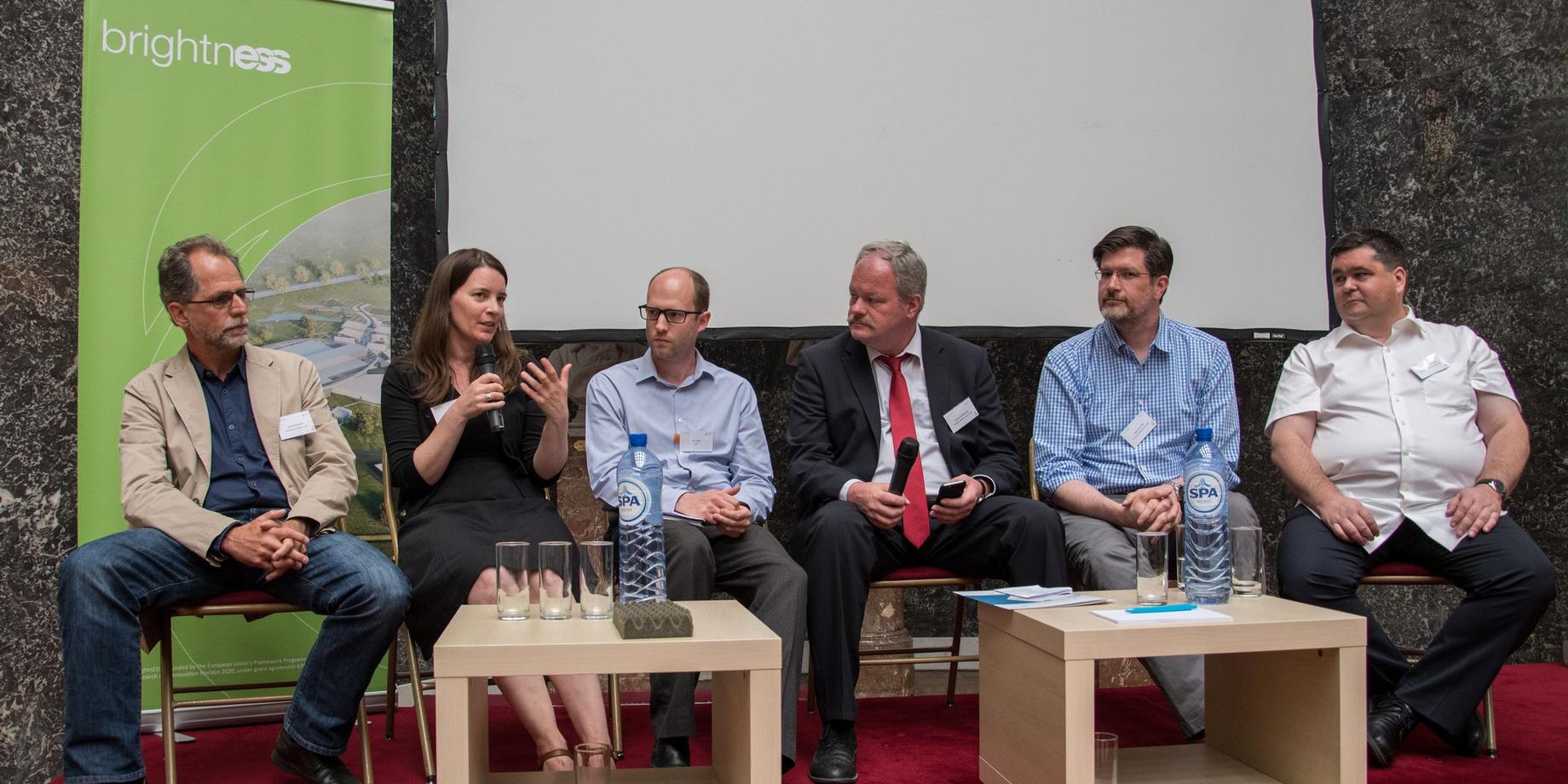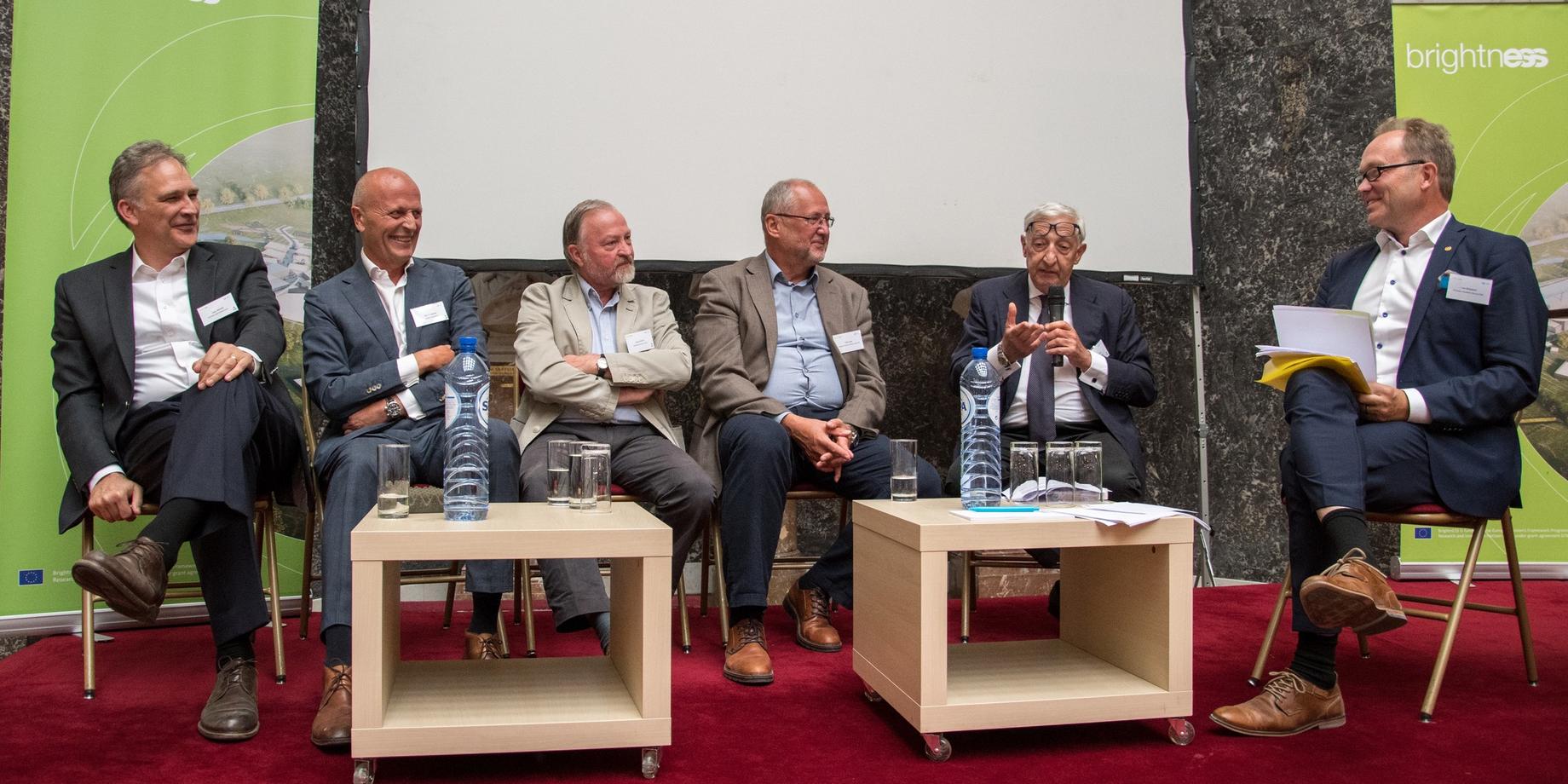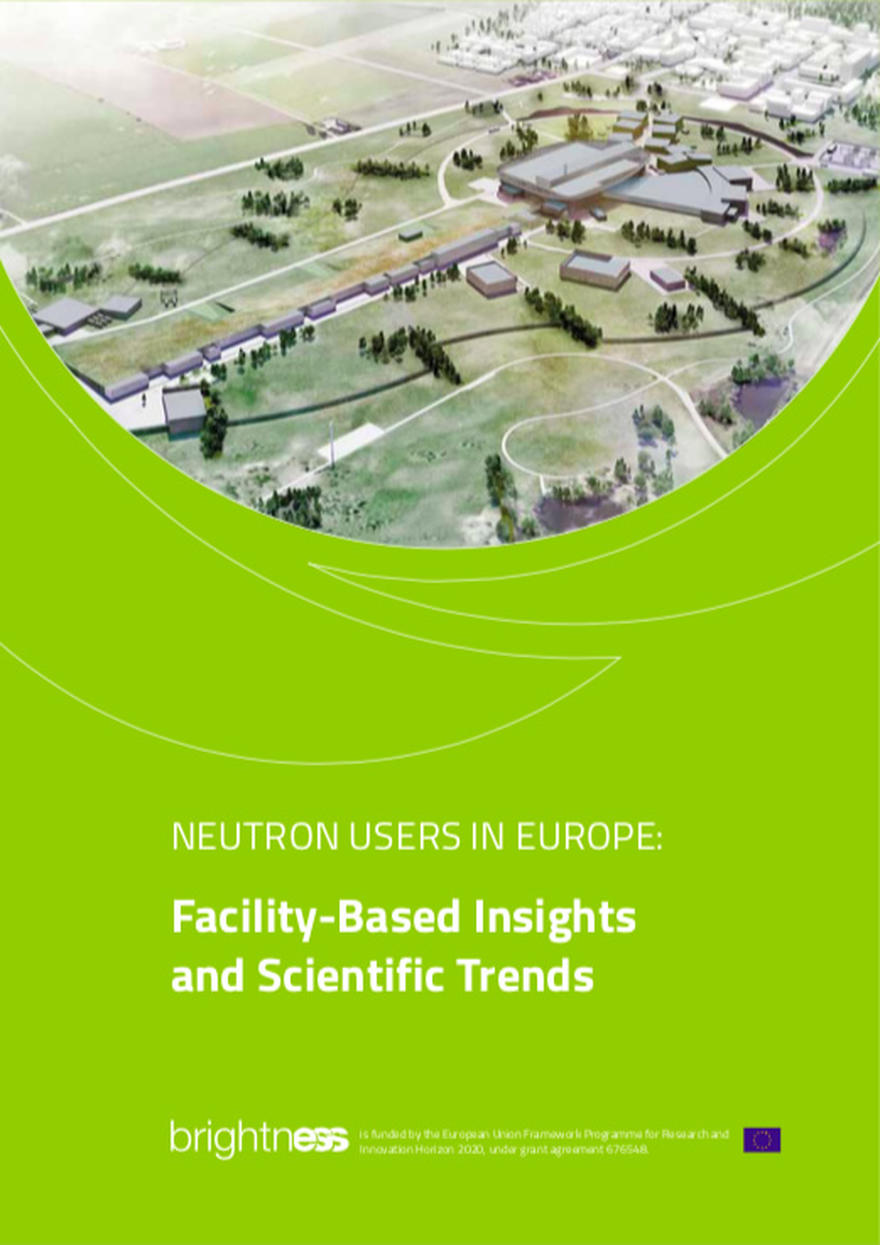
As part of its contribution toward the delivery of the European Spallation Source, the EU sponsored a three-year, €20 million project through its Horizon2020 framework programme. As the project winds down, the 18 BrightnESS partners took the opportunity to highlight the substantial impact their work has had not only in delivering ESS but on European neutron science generally.
BRUSSELS—The achievements of the EU-funded project, BrightnESS, were celebrated during a closing conference in Brussels last Friday, June 22, at the Royal Flemish Academy of Sciences and Arts. More than 130 participants from the project’s 18 consortium partners, the European Commission, the European Spallation Source (ESS), and the broader European scientific and research infrastructure community participated in the event.
The consortium, which includes partners from 11 European countries, received nearly €20 million from the European Union’s Framework Programme for Research and Innovation, Horizon 2020, for their Building a Research Infrastructure and Synergies for Highest Scientific Impact on ESS (BrightnESS) proposal. The objective of the BrightnESS project, which began in 2015, has been to implement activities to mitigate technological and organisational risks relative to the delivery of ESS.
“We take great satisfaction in the fact that BrightnESS has had an impact on ESS,” said Philippe Froissard, the European Commission’s Deputy Head of the Research Infrastructure Unit at DG Research and Innovation, who opened the conference. “Following ESFRI’s [the EC’s European Strategy Forum on Research Infrastructures] prioritization of ESS in 2014, the Commission awarded the €20 million grant to mitigate the risks facing ESS at the time. We look forward to supporting ESS in the continuing process of gaining long-term sustainability.”
A Multi-Faceted Approach to Delivering Science at ESS: Technology, Organisation, Impact-Assessment and In-Kind
The one-day programincluded three panel discussions addressing key areas advanced and impacted by BrightnESS: the European neutron landscape; the in-kind contribution model and the European Research Infrastructure Consortium (ERIC) framework; and the technical innovations required for the success of ESS. In all, nearly 20 speakers and panellists took the stage to highlight the results and impacts of the project, which have been substantial.
“It would be easy to underestimate the impact that this project has had in delivering ESS—after all, BrightnESS quickly became a part of our daily work in building the facility,” said ESS Director General John Womersley. “So it is appropriate that we pause to take notice of, and to celebrate, the essential contributions the project has accumulated since 2015. It all makes a very clear case for the value of programmes of this sort.”
Highlights on the technical side of the project include the essential development, testing and optimisation of state-of-the-art technology in neutron detectors for ESS. These advances in Boron-based detectors will have a direct impact on the science delivered by ESS, and have eliminated one of the most significant technical risks to ESS, the so-called “Helium-3 crisis”—a worldwide dearth in the supply of the standard neutron detection medium.
BrightnESS’ contribution to the improved understanding of moderator physics and the development of engineering solutions for novel moderator design at ESS will also reverberate throughout the global neutron science community. Apart from boosting the brightness of the ESS neutron source by up to a factor of two-and-a-half in some instruments, the new geometry of this Target Station component is a game-changer for spallation source technology going forward. BrightnESS has also provided for the construction of a moderator test beamline prototype to optimise the use of this device for both spallation and reactor sources as well as to support the commissioning process of ESS as a whole.
BrightnESS has helped to secure the long-term sustainability of ESS by facilitating the organisation’s transition to an ERIC, enlarging the facility’s member base, establishing an innovation framework at ESS, and identifying metrics to produce the first socio-economic impact assessment of ESS. BrightnESS has also enabled partners to produce a pan-European survey of neutron sources to provide thorough insight into the technical capacity of the facilities as well as current scientific trends in neutron scattering throughout Europe. A consolidated report of this kind had been missing.
And finally, BrightnESS has succeeded in strengthening the coordination of in-kind contributions (IKCs) from nearly 40 partners across Europe. The scale of the ESS IKC model is unprecedented in a European Big Science project, and so far more than 120 Technical Annexes worth more than €333 million have been approved. Many of these are now well on their way to delivery.
LENS: A New Consortium is Announced
The conference provided a platform for Institut Laue-Langevin (ILL) Director Helmut Schober to introduce a forthcoming consortium, the League of advanced European Neutron Sources, or LENS. The initiative aims to bring together trans-national European neutron sources to coordinate decision-making as the landscape transitions to include ESS.
“Probing materials with neutrons stands as one of the pillars of our scientific analytical techniques,” said Schober in his introduction to the LENS consortium. “As such, neutron sources are essential to the advancement of both the research that works to directly address our society’s grand challenges and the fundamental science at its foundation.”
Most of the prospective LENS partners are national facilities, where the majority of European neutron-based research is conducted. One emphasis of the group’s activities, therefore, will be on the interaction between these national user communities and European funding organisations and their representatives. By optimising resources and closely aligning policies among partners, the LENS vision is one of continuous improvement and adaptation by neutron science facilities to the communities they serve.


























